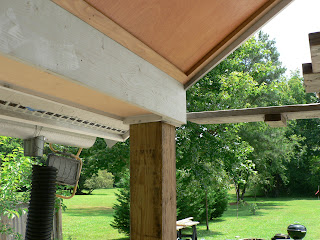 Here is the plumbing diagram we will use for the system. We had to make a few minor changes including:
1. Using a temperature differential controller instead of an automatic controller in the floor loop
2. Adding a mixing valve to the domestic hot water supply.
3. Providing some form of 'heat drop' for excess heat that will be generated in the warmer months.
Installation will begin soon.....stay tuned!
Here is the plumbing diagram we will use for the system. We had to make a few minor changes including:
1. Using a temperature differential controller instead of an automatic controller in the floor loop
2. Adding a mixing valve to the domestic hot water supply.
3. Providing some form of 'heat drop' for excess heat that will be generated in the warmer months.
Installation will begin soon.....stay tuned!
 Happy New Year! Let the plumbing begin! We started installing the system on New Years Eve. Not for any symbolic reason, I just didn't have anything better to do.......
Happy New Year! Let the plumbing begin! We started installing the system on New Years Eve. Not for any symbolic reason, I just didn't have anything better to do.......

 I mocked everything up and had Solar Services Inc. come by and make sure we were on track. The Radiant Floor Company also provided a lot of feedback on the diagrams (which were revised once more) before we soldered all the pipes. Our original need for a 'heat dump' turned to be unnecessary. This system includes a drain back tank so the heat transfer fluid (water) can drop out of the panels when the system is not in use. The trade off here lies in the need for a larger circulation pump to lift the water every time the system kicks on.
I mocked everything up and had Solar Services Inc. come by and make sure we were on track. The Radiant Floor Company also provided a lot of feedback on the diagrams (which were revised once more) before we soldered all the pipes. Our original need for a 'heat dump' turned to be unnecessary. This system includes a drain back tank so the heat transfer fluid (water) can drop out of the panels when the system is not in use. The trade off here lies in the need for a larger circulation pump to lift the water every time the system kicks on.

With all that copper in the utility room someone recommended we get a guard dog. This little lady seemed scary enough!





















































